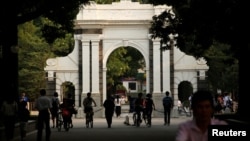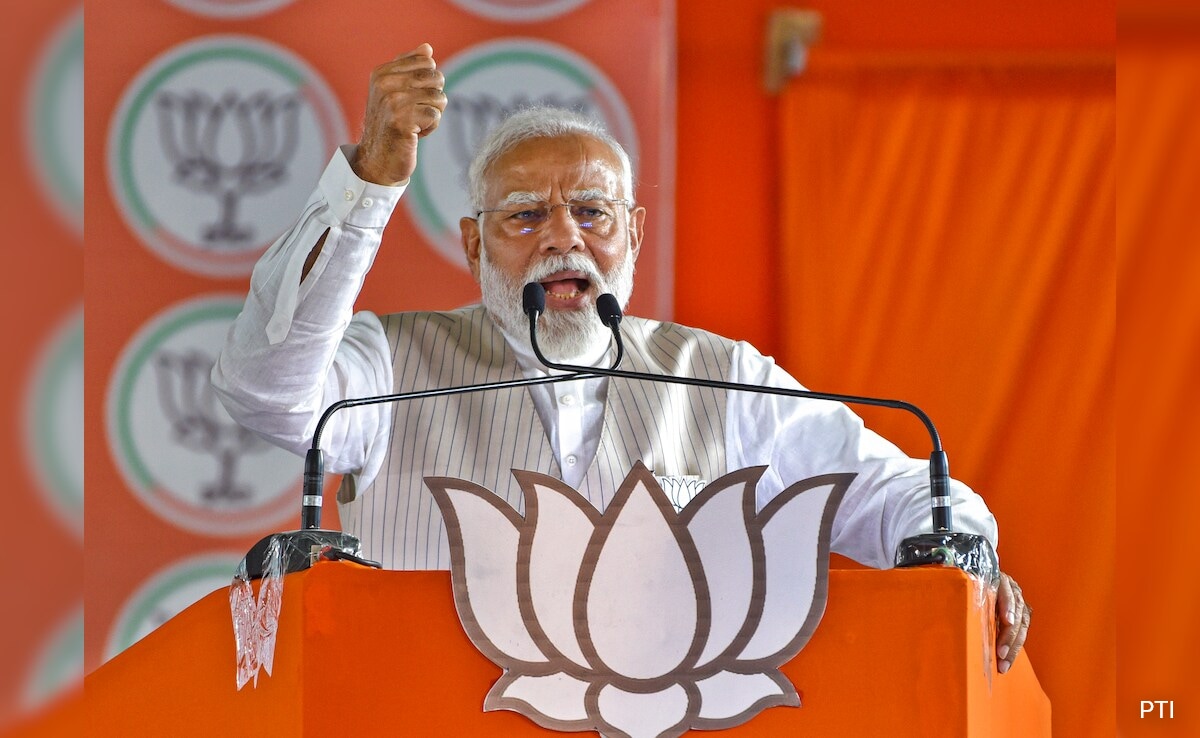Graduate student Stephen Garrett, 27, always thought he would study in China, but the country’s restrictive COVID-19 policies made that nearly impossible, and now he’s finding that even After China reopened, academic interest also waned.
Common concerns include restrictions on academic freedom and the risk of being stranded in China, he said.
Today, only about 700 U.S. students study at Chinese universities, down from a peak of nearly 25,000 a decade ago, while nearly 300,000 Chinese students study in U.S. schools.
Some young Americans are reluctant to invest in China due to reduced economic opportunities and tensions between Washington and Beijing.
Whatever the cause of the imbalance, U.S. officials and academics lament the missed opportunity for young people to experience life in China and gain a deeper understanding of America’s powerful adversary.
Officials from both countries agreed that more should be done to encourage student exchanges at a time when Beijing and Washington can hardly agree on other issues.
“I don’t think the environment is as conducive to educational exchanges as it was in the past, and I think steps need to be taken on both sides,” Deputy Secretary of State Kurt Campbell said.
The United States has made recommendations to it. Citizens are “reconsidering” travel to China amid concerns about arbitrary detentions and the expanded use of exit bans to prevent Americans from leaving the country. Campbell said this hampered the exchange’s redevelopment and that relaxing the recommendations was “actively under consideration”.
For its part, Beijing is rebuilding international student programs that were shuttered during the pandemic, and Chinese President Xi Jinping has invited tens of thousands of American high school students to visit.
In 2009, after President Obama launched the “100,000 Strong” plan to significantly increase the number of American students studying in China, the situation was completely different.
According to data from the Chinese Ministry of Education, as of 2012, there were 24,583 American students in China. The Institute of International Education’s Open Doors report, which tracks only students enrolled in U.S. schools and taking credits in China, shows the number peaked at 14,887 in the 2011-12 school year. But 10 years later, this number was only 211.
U.S. Ambassador to China Nicholas Burns said that at the end of 2023, the number of U.S. students was 700. He said that this number is too few for a country so important to the United States.
“We need young Americans to learn Mandarin. We need young Americans to experience China,” Burns said.
David Moser, an American linguist who visited China in the 1980s, warned that without these American students “we will not be able to conduct smart, informed diplomacy in China over the next decade” and now he The mission was to establish a new master’s degree program. International Student Program at Beijing Capital Normal University.
Moser recalled those years when American students found China fascinating and thought an education there could lead to interesting careers. But he said the days of busy trade and currency transactions were gone, while American students and their parents watched as China and the United States drifted apart. “So people think investing in China as a career is a stupid idea,” Moser said.
The number of U.S. students in China declined after 2012, but remained stable at more than 11,000 for years until the pandemic hit, when China closed its borders to most foreigners, according to Open Doors . Moser said overseas student programs that took years to build were shut down and staff laid off.
Amy Gadsden, executive director of the University of Pennsylvania China Initiative, also attributed the drop in interest in part to foreign companies closing offices in China. She said Beijing’s response to the epidemic revealed a harsh governance style and also made American students hesitant.
Garrett, who will graduate this summer from the Johns Hopkins School of Advanced International Studies, said he felt ambivalent about working in China, citing a lack of access to information, restrictions on discussion of politically sensitive issues and China’s overall counterintelligence activities. law. He lived in Hong Kong as a teenager and interned in mainland China, and said he is still interested in traveling to China, but not anytime soon.
Andrew Mesa, director of the SAIS China Global Studies Center, said some American students are still committed to studying in China. “Some people are interested in China for China’s sake,” he said. “I don’t think the numbers have been affected at all.”
About 40 U.S. students are currently studying at Hopkins’ Nanjing center in the eastern Chinese city, and that number is expected to increase to 50 to 60 students in the fall before the outbreak, said Adam Webb, an American student at the center. s level. Co-Director.
Among them was Chris Hankin, 28, who said he believed his time in China was irreplaceable because he could interact with ordinary people and travel to places outside the spotlight of international media. “As relationships become closer, it’s important to have that color and granularity,” said Hankin, an international relations master’s student focusing on energy and environment.
Jonathan Zhang, a Chinese-American who studies in the prestigious Schwarzman Scholars program at Tsinghua University in Beijing, said staying in China is more important than ever amid tensions. “It’s hard to talk about China if you’re not in China,” he said. “I think it’s a real shame that so many people have never set foot in China.”
Zhang was met with concern when he postponed an invitation from a consulting firm to Beijing. “They’ll say, ‘Oh, be safe,’ or ‘What do you mean you’re going back to China?'” Zhang said. “I feel like the (Chinese) government is making a serious effort, but I feel like that trust has been broken to a large extent.”
Gadsden said American universities need to do more to get students to consider China. “We need to be more intentional about creating opportunities to encourage students to study China more deeply because it will be interesting to them and valuable to U.S.-China relations and the world,” she said.
In China, Jia Qingguo, an international relations professor and national political adviser, recommended that Beijing clarify laws involving foreigners, introduce a separate political review system for foreign students’ thesis, and make it easier for foreign graduates to find internships and employment opportunities with Chinese companies.
Meanwhile, China is hosting 50,000 American high school students over the next five years under a plan announced by Xi Jinping in November.
In January of this year, 24 students from Muscatine High School in Iowa became the first group of students to go to China. During this nine-day free trip, they visited the Beijing Zoo, the Great Wall, the Palace Museum, Yu Garden and the Shanghai Museum.
Sienna Stonking, one of the Muscatine students, now wants to return to China to study.
“If I have the chance, I would love to go to university in China,” she told Chinese state broadcaster CGTN. “Honestly, I love it there.”
Follow us on Google news ,Twitter , and Join Whatsapp Group of thelocalreport.in

















